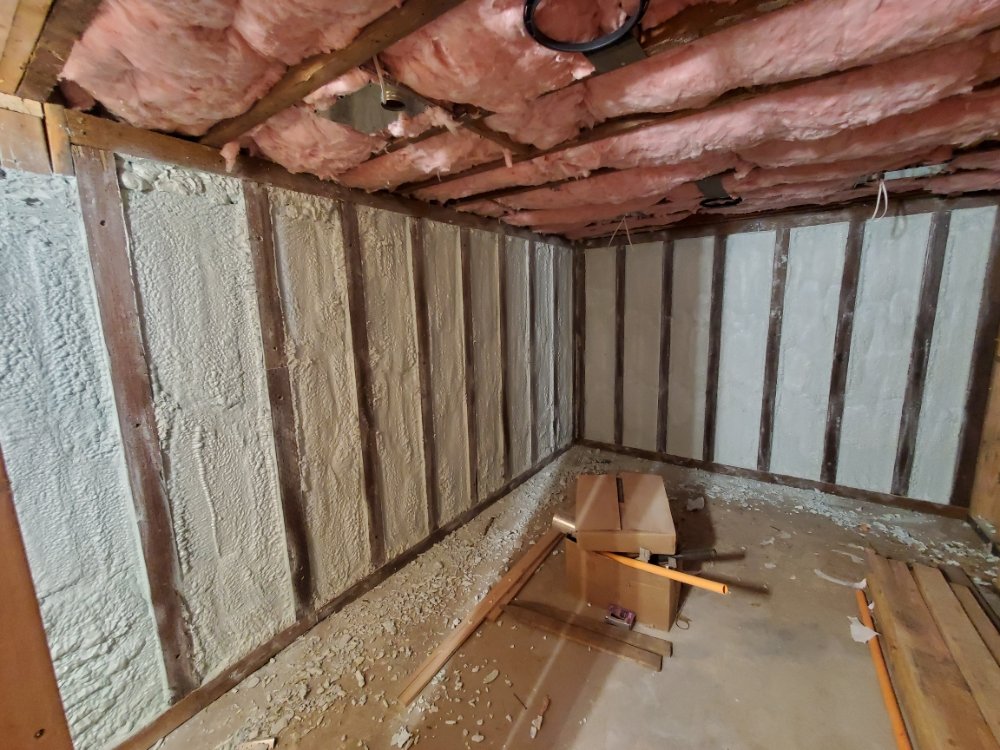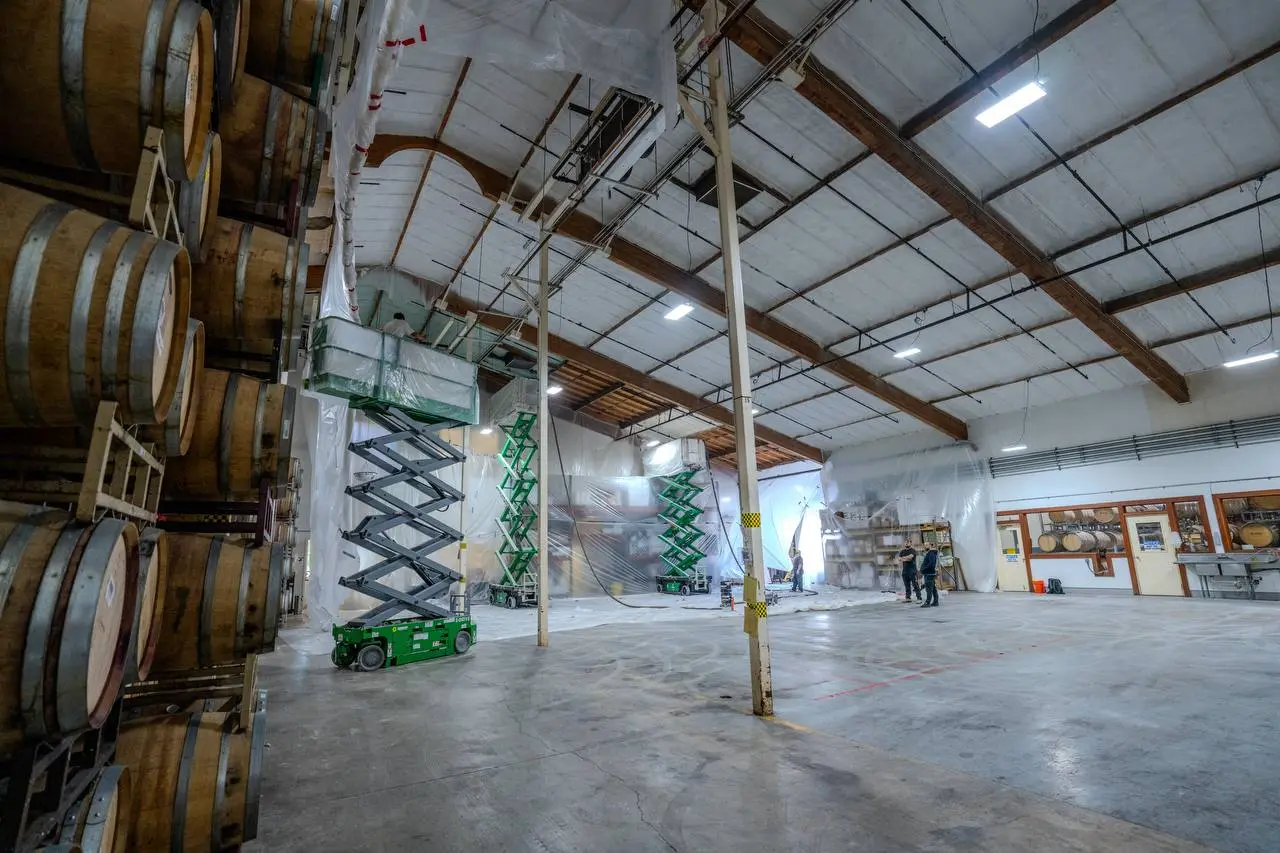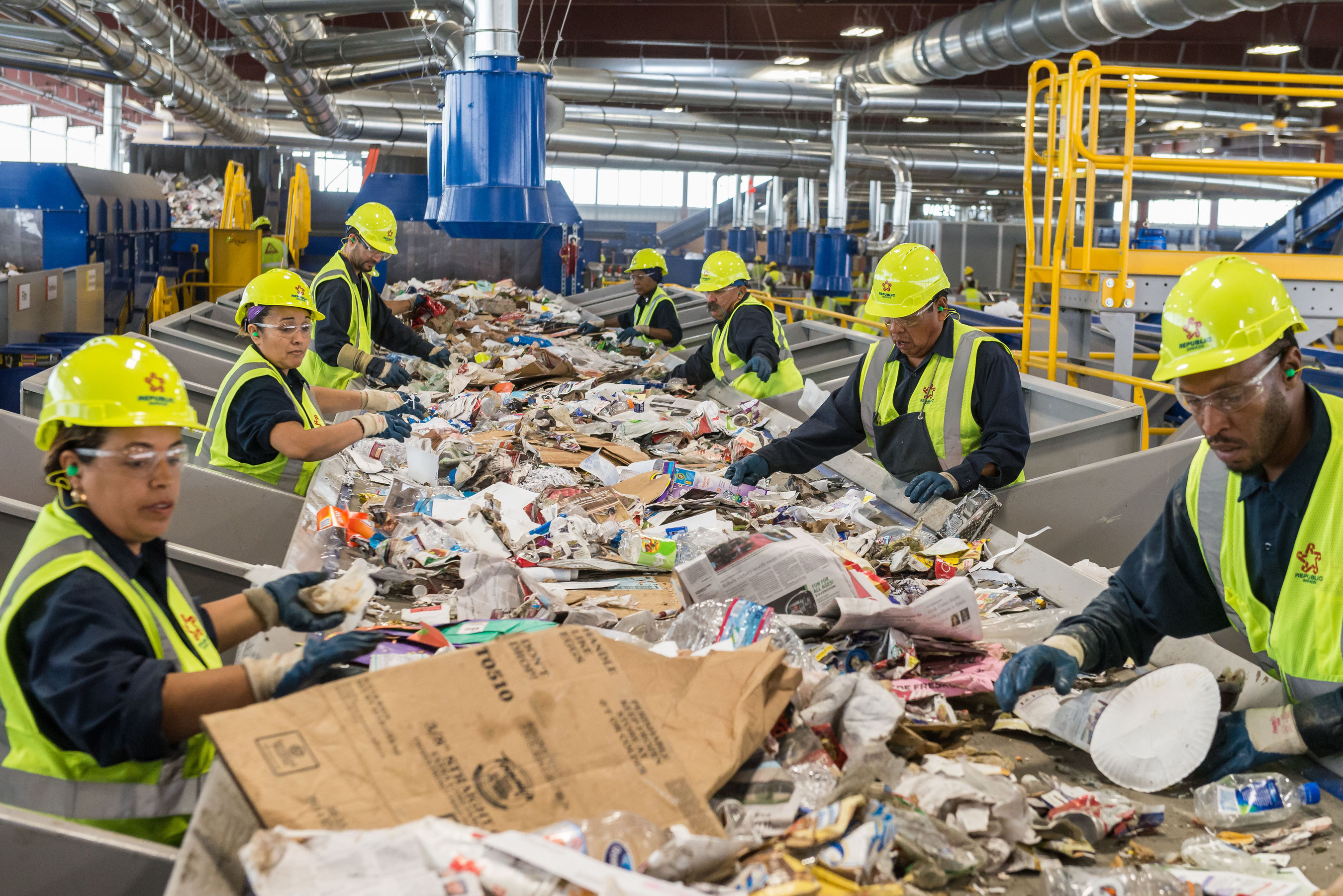Closed-Cell vs Open-Cell Spray Foam in 2025: Cost, R-Values & Best Uses
11/13/2025 2:30 AM
.jpg)
Professional spray foam insulation: closed-cell and open-cell options for 2025 California projects.
As California's energy costs rise and building codes tighten, choosing the right spray foam insulation has never been more important. The industry is experiencing major changes in 2025 - from stricter energy-efficiency standards to the nationwide phase-out of high-GWP (Global Warming Potential) blowing agents that harm the environment.
Your decision between closed-cell and open-cell spray foam will directly impact your comfort, energy bills, moisture control, and long-term property value. Whether you're insulating a new construction project, retrofitting an older home, or upgrading a commercial or agricultural facility, understanding the differences between these two foam types will help you make a smart, future-ready investment.
This guide breaks down everything you need to know - performance specs, real-world costs, climate considerations, and which foam works best for your specific project.
Key Takeaways
-
Closed-cell spray foam provides R-6 to R-7 per inch, superior moisture resistance, and structural rigidity — ideal for roofs, exterior walls, metal buildings, and high-humidity zones.
-
Open-cell spray foam delivers R-3.5 to R-3.8 per inch, offering excellent soundproofing and air sealing at a lower cost — perfect for interior walls and attics in mild climates.
-
2025 cost ranges: Open-cell averages $0.60–$1.60 per board foot ($1.50–$3.50 per sq ft installed); closed-cell ranges $1.30–$3.10 per board foot ($3.00–$5.00 per sq ft installed).
-
Energy savings: Spray foam can cut heating and cooling costs by 25–40%, with an average ROI of 3–5 years due to reduced HVAC loads.
-
Environmental progress: The 2025 transition to HFO-based systems cuts greenhouse gas emissions by up to 99% compared to old HFC foams.
-
California climate advantage: Closed-cell suits coastal and humid zones; open-cell works best inland or in mild climates.
-
Professional installation is key: USA Spray Me designs and installs code-compliant, energy-efficient systems tailored to your specific climate and building type.
Get Your Free Quote
Fill out the form below for instant pricing
What Is Spray Foam & Why It Matters in 2025
Spray polyurethane foam (SPF) insulation is applied as a liquid that expands up to 100 times its original size, forming an airtight and seamless thermal envelope. Unlike fiberglass or cellulose, spray foam insulates and seals simultaneously - stopping drafts, condensation, and heat loss in one step.
Why Spray Foam Is Critical in 2025
Tighter energy codes:
Updated IECC 2024 and California Title 24 (2025 revision) require higher R-values and stricter air-leakage limits. Closed-cell foam easily exceeds these benchmarks, reducing energy loss by up to 40% compared to traditional materials. Buildings that meet or exceed these standards not only pass inspection more easily but also qualify for energy rebates and tax incentives.
Greener chemistry:
Starting January 1, 2025, HFC-based systems are being phased out nationwide. Modern closed-cell foams now use low-GWP HFO blowing agents, cutting their carbon footprint by 90–99% without compromising R-value or durability. This shift represents one of the most significant environmental improvements in the insulation industry's history, aligning with California's aggressive climate goals.
Moisture and durability:
California's climate diversity - from foggy coasts to arid valleys - demands insulation that can handle temperature swings and humidity. Properly installed spray foam lasts over 80 years and resists mold, air leaks, and water intrusion. Unlike traditional insulation that can settle, compress, or absorb moisture over time, spray foam maintains its performance decade after decade.
Open-Cell Spray Foam - Properties & Best Uses
Open-cell spray foam is the lighter, more flexible option. It gets its name from the tiny cells that remain "open" after expansion, creating a spongy texture that's excellent for sound absorption and air sealing in the right applications.
Technical Specifications
Open-cell foam has a density of approximately 0.5 lb/ft³ and delivers R-3.5 to R-3.8 per inch of thickness. It expands dramatically - up to 100:1 - which means it fills irregular cavities completely, getting into every crack and crevice. The material is semi-permeable to vapor, so it's not considered a vapor barrier. Where it really shines is sound control, offering excellent acoustic absorption that closed-cell can't match.
Where Open-Cell Excels
Interior partition walls are ideal for open-cell foam, especially in bedrooms, offices, or multi-family units where soundproofing matters. The material dampens noise transmission between rooms far better than traditional insulation. Conditioned attics in mild climates also benefit from open-cell's cost-effective thermal protection, particularly when you have adequate depth to achieve target R-values.
Budget air-sealing projects represent another sweet spot. When you need to stop air leaks and have enough cavity depth to work with, open-cell delivers professional results at a fraction of closed-cell's cost. It's particularly popular in new construction where interior walls need both insulation and sound control.
Important Limitations
Open-cell isn't suitable for moisture-prone zones like crawl spaces, basements, or metal buildings. Its semi-permeable nature means water vapor can pass through, potentially leading to condensation issues in the wrong application. You'll also need nearly twice the thickness of closed-cell to reach the same R-value, which matters when cavity depth is limited. Finally, open-cell doesn't strengthen structures - it's purely an insulation and air-sealing material.
Closed-Cell Spray Foam - Properties & Best Uses
Closed-cell spray foam is the heavy-duty option. Its cells are completely closed and packed tightly together, creating a rigid, dense material that serves multiple functions beyond just insulation.
Technical Specifications
Closed-cell foam has a density of approximately 2.0 lb/ft³ - four times denser than open-cell. It delivers R-6 to R-7 per inch, nearly double the insulating power. The structure is rigid and dense enough to add measurable structural strength to walls and roofs. It has very low vapor permeability, functioning as an effective vapor retarder, and offers excellent moisture resistance that makes it suitable for challenging environments.
Where Closed-Cell Excels
Metal buildings, warehouses, and pole barns are classic closed-cell applications. The foam prevents condensation on metal surfaces and protects against corrosion - a critical benefit in agricultural and industrial settings. Agricultural and food storage facilities rely on closed-cell to maintain stable temperature and humidity, protecting valuable crops and products.
Roofs and decks benefit enormously from closed-cell's waterproof, continuous thermal barrier. The material creates an unbroken shield against heat loss and water intrusion. Exterior walls and rim joists are another prime use case, delivering maximum R-value in limited space - crucial when every inch of wall thickness matters.
High-humidity or coastal regions demand closed-cell's superior moisture resistance. In places like San Francisco, Monterey, or San Diego, where salt air and fog are constant challenges, closed-cell resists mold and vapor drive that would compromise other insulation types. Retrofit projects also favor closed-cell because you can achieve high performance without sacrificing precious interior space.
Important Considerations
Closed-cell costs 2–3 times more than open-cell upfront, which can be a significant budget factor. It requires licensed professional installation - this isn't a DIY material. Building codes also require that spray foam be protected with an ignition or thermal barrier like drywall, adding another layer to your project planning.
.jpg)
Closed-cell spray foam provides superior moisture control and structural support in metal buildings.
Closed-Cell vs Open-Cell — R-Values & Thickness
| Property | Open-Cell | Closed-Cell |
|---|---|---|
| R-Value per inch | R-3.5–R-3.8 | R-6–R-7 |
| Density | ~0.5 lb/ft³ | ~2.0 lb/ft³ |
| Air Sealing | Excellent | Excellent |
| Vapor/Moisture Control | Semi-permeable | Low permeability |
| Sound Control | Superior | Moderate |
| Structural Strength | None | Adds rigidity |
| Typical Uses | Interior walls, attics | Roofs, exterior, metal buildings |
Real-World Example
To reach R-38 (typical attic target in California):
- Open-cell → 10–11 inches of thickness
- Closed-cell → 5.5–6.5 inches of thickness
This difference matters enormously in retrofit projects or buildings with limited cavity depth. Closed-cell lets you achieve code-required R-values in spaces where open-cell simply won't fit.
When to Use Closed-Cell vs Open-Cell
The right choice depends on your specific building, climate, and performance goals. Here's how to decide.
Choose Closed-Cell If:
- You need maximum R-value in limited space, especially in retrofit projects where cavity depth is fixed
- You're insulating roofs, rim joists, or exterior walls where moisture control is critical
- You need vapor and moisture protection in humid, coastal, or flood-prone areas
- You're working with metal or agricultural buildings where condensation control is essential
- Your structure needs extra rigidity - closed-cell can add measurable racking strength to walls and roofs
- You live in coastal California (San Francisco, Monterey, San Diego), high-humidity zones, or areas with extreme temperature swings
Choose Open-Cell If:
- You're insulating interior walls and want superior soundproofing between rooms or floors
- You live in a mild, dry climate where moisture isn't a concern
- You're prioritizing cost-effective air sealing and have budget constraints
- You have ample cavity space in attics or new construction where thickness isn't limited
- Moisture exposure is minimal or non-existent in the application area
- You're working on interior partitions in conditioned spaces
California-Specific Climate Recommendations
California's diverse climate zones require different insulation strategies. Here's what works best in each region.
| Region | Climate Challenge | Recommended Foam |
|---|---|---|
| Coastal (San Francisco, Monterey, San Diego) | High humidity, salt air, fog | Closed-cell for roof & exterior walls |
| Central Valley (Sacramento, Fresno) | Extreme heat, temperature swings | Closed-cell for roof & walls |
| Mountain & High Desert (Tahoe, Big Bear) | Cold winters, limited cavity space | Closed-cell for high R-value per inch |
| Inland Mild (Modesto, Livermore) | Balanced climate, moderate conditions | Hybrid: closed-cell exterior + open-cell interior |
Why Location Matters
Coastal regions face constant moisture from fog and salt air that can corrode and damage buildings over time. Closed-cell's moisture resistance protects your investment. The Central Valley's extreme temperature swings - 110°F summers and freezing winters - demand closed-cell's superior R-value to maintain comfort year-round.
Mountain and high-desert areas need maximum insulation in minimum space due to extreme cold and limited wall cavity depth. Closed-cell delivers. Inland mild climates offer more flexibility, making hybrid systems cost-effective - use closed-cell where it matters most (exterior envelope) and open-cell where it saves money (interior partitions).
2025 Building Codes & Sustainability Trends
The regulatory landscape is evolving rapidly, and spray foam is uniquely positioned to meet new requirements.
Building Code Evolution
IECC 2024 and California Title 24 (2025 update) mandate higher R-values and tighter air sealing requirements for attics, walls, and foundations. Spray foam simplifies compliance because it addresses both insulation and air sealing in one application. Projects using spray foam often exceed code minimums by 20–30%, providing a comfortable compliance margin.
Homes insulated with spray foam typically earn better HERS (Home Energy Rating System) scores, which translates to higher resale value. Many buyers now specifically look for spray foam insulation when shopping for homes. Projects also qualify for various energy rebates and incentives at federal, state, and utility levels.
Environmental Impact and Progress
The EPA's 2025 HFC phase-down eliminated most high-GWP formulations that contributed significantly to climate change. Modern closed-cell foams use HFO (hydrofluoroolefin) blowing agents with up to 99% lower global warming potential. This shift reduces lifetime carbon emissions per home by the equivalent of taking two passenger cars off the road permanently.
USA Spray Me exclusively uses low-GWP, Title 24-compliant systems that have been tested for low VOCs (volatile organic compounds) and proven long-term durability. These modern formulations perform as well or better than older chemistry while dramatically reducing environmental impact.
Common Mistakes to Avoid
Even the best materials fail when improperly installed. Here are the mistakes we see most often.
DIY or Unlicensed Application
Spray foam requires precise chemical ratios, proper temperature control, and professional equipment. Poor mixing leads to soft or brittle foam that doesn't perform, fails inspections, and wastes thousands of dollars. Always hire licensed, certified professionals.
Using Open-Cell Where Moisture Exists
Installing open-cell in crawl spaces, basements, or metal buildings invites mold, rot, and structural damage. The semi-permeable nature of open-cell allows moisture to pass through, creating perfect conditions for problems.
Under-Applying Closed-Cell
Skimping on thickness to save money defeats the purpose. Insufficient closed-cell thickness reduces R-value, compromises the vapor barrier, and fails to deliver the structural benefits you're paying for.
Ignoring Ventilation and Ignition Barriers
Building codes require spray foam to be covered with an approved ignition barrier (typically drywall) and proper ventilation strategies in certain applications. Cutting corners creates code violations and serious safety risks.
Choosing the Cheapest Quote
Unqualified contractors often cut corners, use outdated HFC foams, apply insufficient thickness, or lack proper insurance. The cheapest quote usually becomes the most expensive mistake when you factor in poor performance, failed inspections, and costly repairs.
The Solution
Always work with certified, insured professionals who stand behind their work. USA Spray Me ensures every system meets or exceeds California code and inspection standards, with documentation and warranties that protect your investment.
Why Choose USA Spray Me
Experience You Can Trust
With over 15 years serving Northern California, USA Spray Me has earned the trust of homeowners, contractors, and developers throughout the region. We've insulated thousands of projects - from single-family homes to large commercial buildings - with a track record of quality that speaks for itself.
What Sets Us Apart
We use only code-compliant, low-GWP systems that meet 2025 environmental standards. Our team is fully licensed, insured, and certified by leading manufacturers. We don't offer one-size-fits-all solutions - every project gets a tailored insulation plan designed for your specific climate zone, building type, and performance goals.
Our installations are clean, professional, and completed on schedule. We provide long-term warranties and deliver measurable energy savings that you can verify on your utility bills. We handle all documentation and coordination with inspectors to ensure smooth approvals.
USA Spray Me is an insulation company based in San Francisco and serving Northern California. Our expert technicians specialize in spray foam insulation systems that deliver real-world performance and energy savings.
Get Expert Spray Foam Guidance →Frequently Asked Questions (FAQ)
Here you'll find answers to the questions we get asked by our clients.
Not always. Closed-cell offers higher R-value and moisture protection, but open-cell is better for soundproofing and costs significantly less. The best option depends on your building type, budget, climate, and specific performance needs. We help you choose the right solution for your situation.
Open-cell delivers R-3.5 to R-3.8 per inch. Closed-cell provides R-6 to R-7 per inch. These values are verified for the new low-GWP 2025 formulations and remain consistent with older chemistry.
Yes - hybrid systems are increasingly common and often represent the smartest value. Use closed-cell for your exterior shell, roof, and moisture-prone areas, then use open-cell for interior partitions where soundproofing matters. This approach optimizes performance and cost.
Closed-cell, without question. It controls condensation that causes corrosion in metal buildings, adds structural rigidity, and resists water intrusion in crawl spaces. Open-cell would fail in both applications.
The new HFO-based closed-cell foams have up to 99% lower global warming potential compared to old HFC formulations, with equal or better R-values, durability, and moisture resistance. Performance hasn't been compromised - it's actually improved in some formulations.
Yes, when installed by licensed professionals following manufacturer specifications and Title 24 standards. USA Spray Me uses only low-VOC, fire-rated, code-compliant systems. Proper installation includes required ignition barriers and ventilation strategies that ensure safety.
Contact us to discuss your spray foam insulation project.






